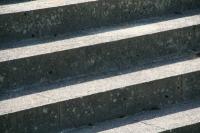VIDEO: How much salt goes in the dishwasher?
No matter how much experience you have with dishwashers, you should still study the operating instructions for your new appliance. Unless you already know this model inside and out.
That is why salt and rinse aid are important for the dishwasher
- The more calcareous your water, the more important it is that you use the dishwasher Fill with special salt. But not every device has a salt warning indicator. If this is the case, you can calculate the refill intervals using the operating instructions. There you will find with safety information after how many wash cycles you need to replenish.
- If you do not refill the salt, the inside of the device will become calcified over time and the heating elements will break. The result is that the dishwasher no longer heats up.
- How much salt you need to top up varies from machine to machine. However, if the salt chamber of the device is empty, you can assume that almost a whole carton of salt will fit in it.
- So that you don't spill too much of the coarse-grained salt when filling, most manufacturers include a kind of funnel that makes it easier to fill the chamber. If something goes wrong, you should rinse the inside of the device with clean water or let the machine run immediately. If moist salt crystals remain in the tub for a long time, they could damage the surface.
- The rinse aid does not protect the dishwasher, but your dishes will benefit from it. It dries better and the glasses stay clear. If your device does not have a warning indicator on the faceplate, you can check the level of rinse aid from a small porthole next to the detergent flap. You are guaranteed to find a detailed description of how to read the supply in the operating instructions.
- You can add enough rinse aid to the compartment provided for this purpose until it overflows. However, wipe away any spilled residue with a rag or run the dishwasher immediately.
Dishwasher: detergent does not dissolve - what to do?
Different detergents for the dishwasher are a dime a dozen. They have …
Look how many leftovers are in the sieve
- You should check the filter in your dishwasher at regular intervals and clean it if necessary. How much remains in the sieve ultimately depends on whether you put the dishes and leftovers in the machine, or whether you rinse them beforehand.
- If the sieve is clogged up, the device will have problems pumping out the rinsing water. In addition, food residues are washed around in the machine with every wash cycle and can stick to the dishes. If your dishes are no longer properly clean, it is therefore worth taking a look in the sieve.
- Cleaning works best under running water using a dish brush. While this process is a bit gross, don't ignore a dirty strainer.
Additional care by cleaning the machine
- If you assume that the inside of your dishwasher will be clean after using it, you are basically right. Nevertheless, it can happen that food residues stick to the surfaces. If possible, you should soften and remove these with a damp cloth. If you don't do this, the coarse remains will eventually end up in the sieve or on the dishes.
- When loading the dishwasher, you will likely spill something every now and then. This mainly happens with leftover drinks from glasses or cups. These residues often run into the side edges of the machine door and into the seals. You should therefore wipe these areas with warm soapy water every now and then. First, it's more hygienic and, second, the rubber seals benefit from it.
- However, if your empty dishwasher smells one day, you should investigate the cause. Check the filters and seals for dirt and then run the machine with the longest possible wash cycle without dishes.
- You may have only run short programs for a long time, so that countless bacteria have settled in hard-to-reach places. After you have run the machine without dishes, you should therefore inspect it again thoroughly and, if necessary, wash it with washing-up liquid and a cloth.


